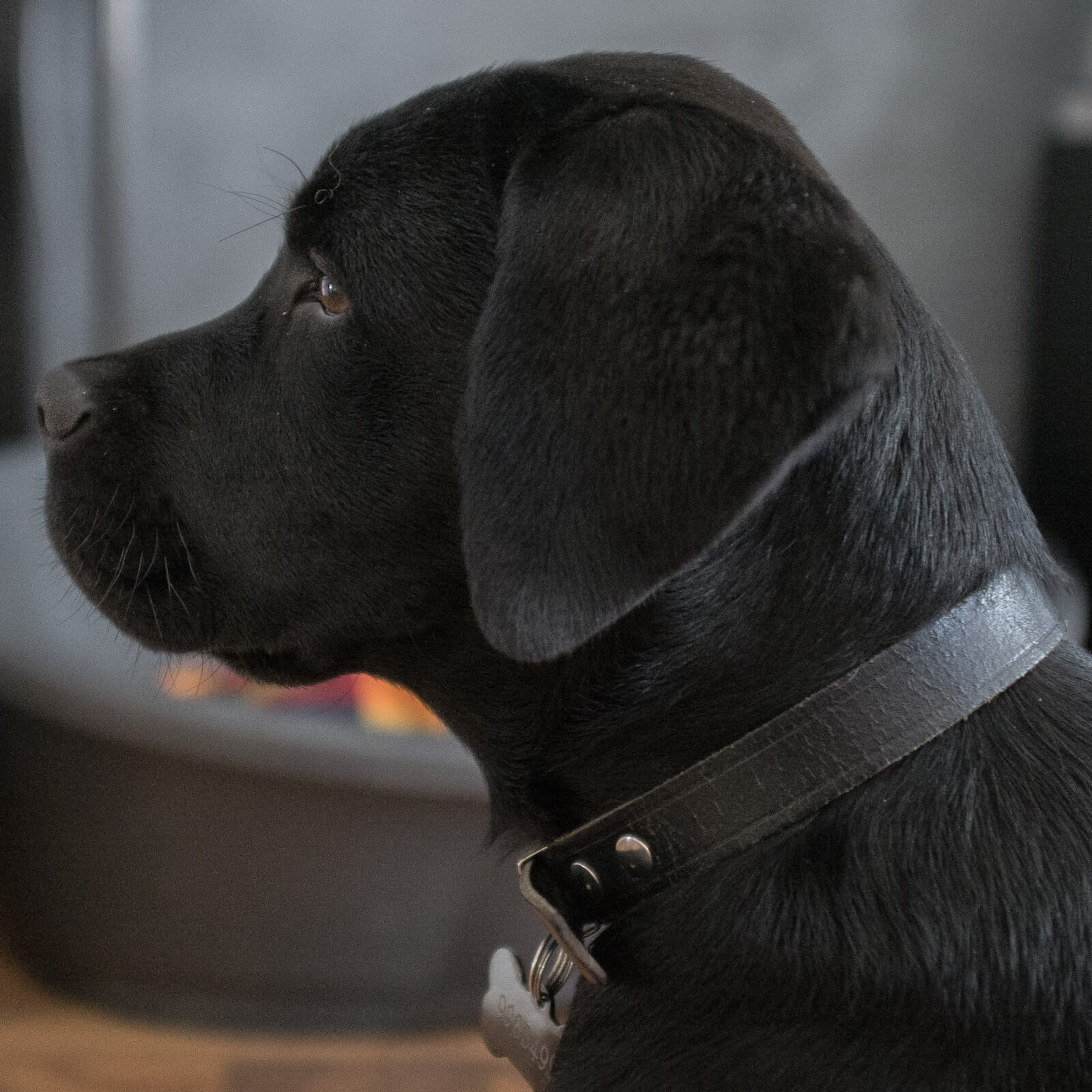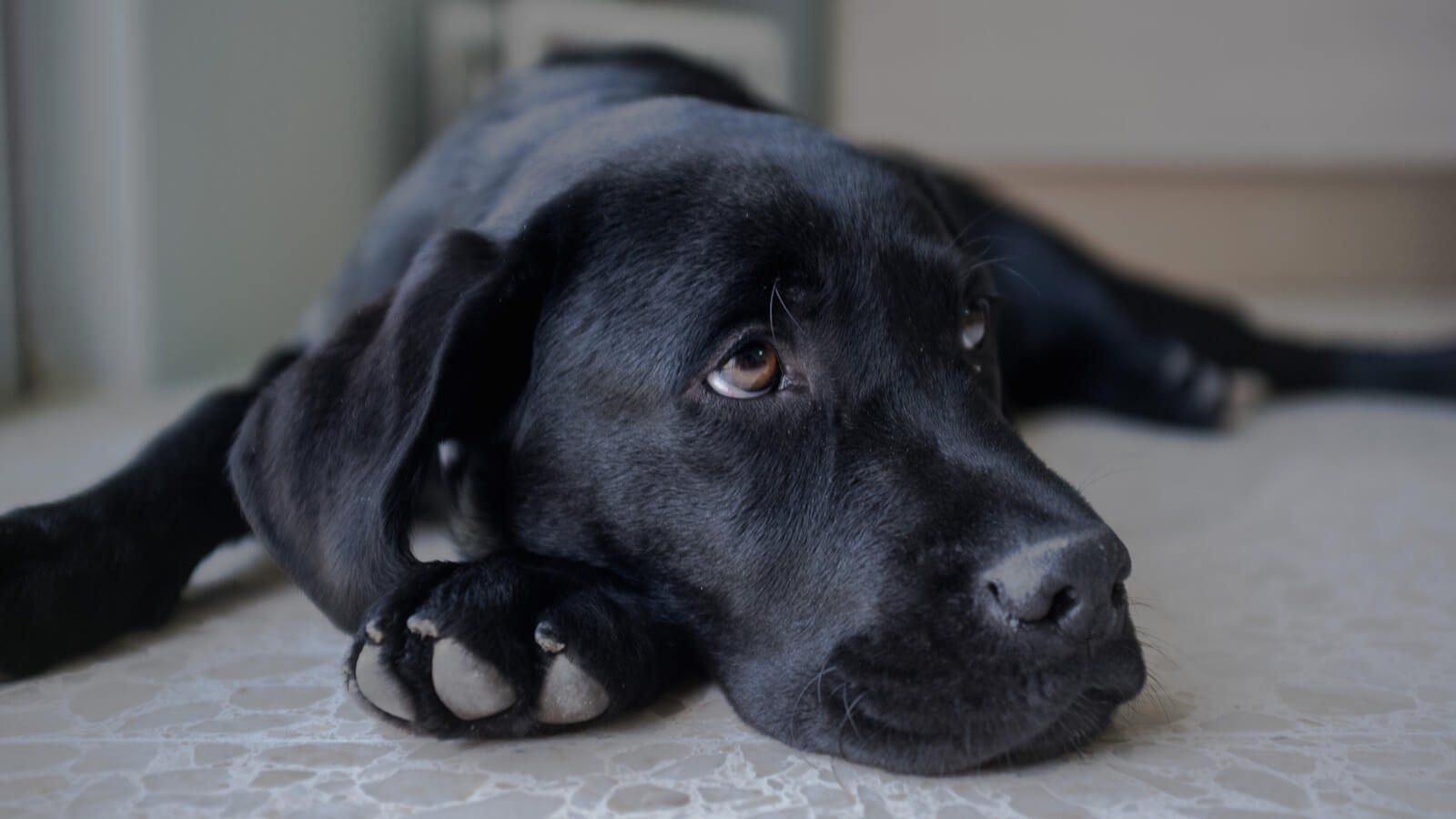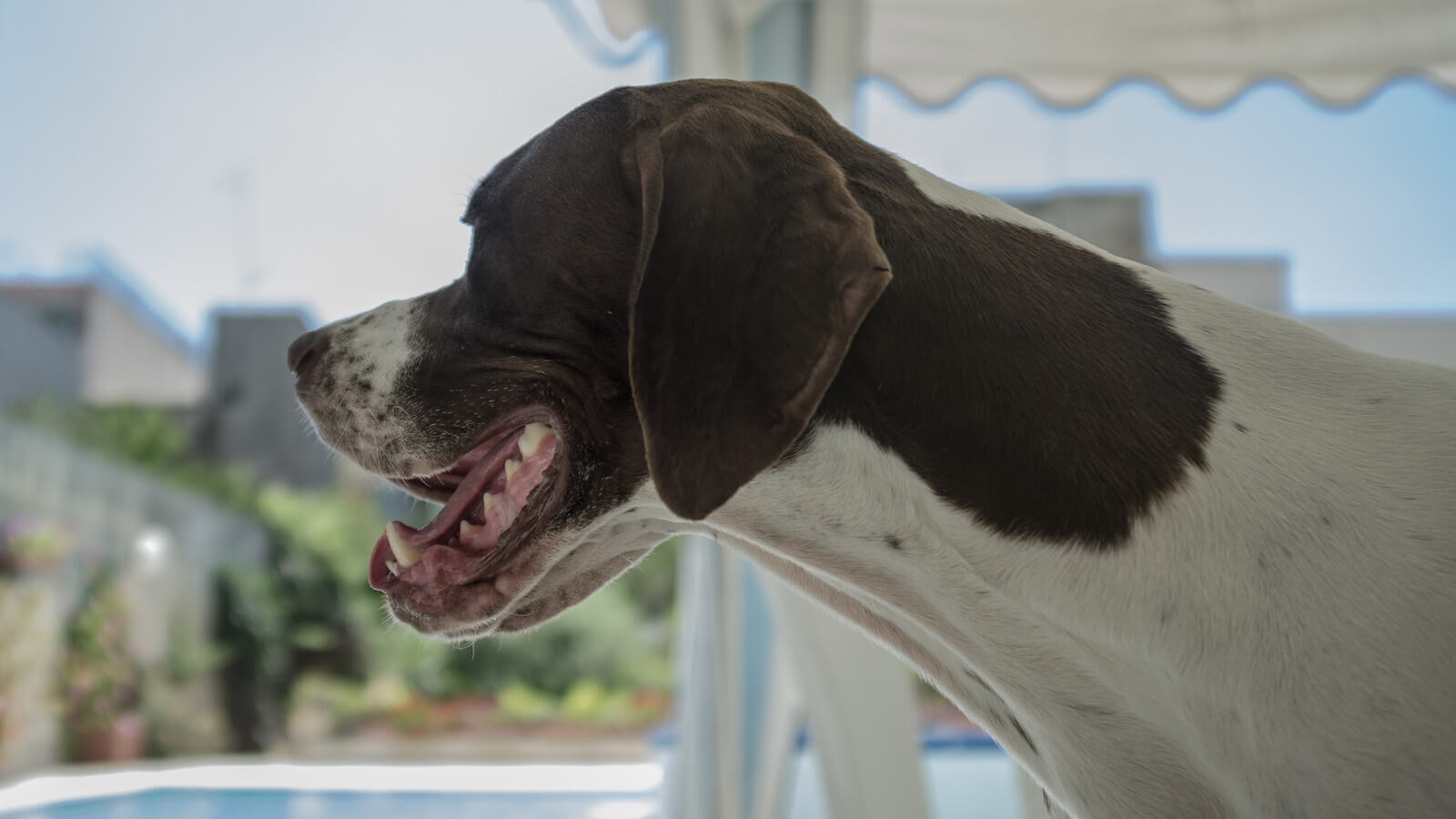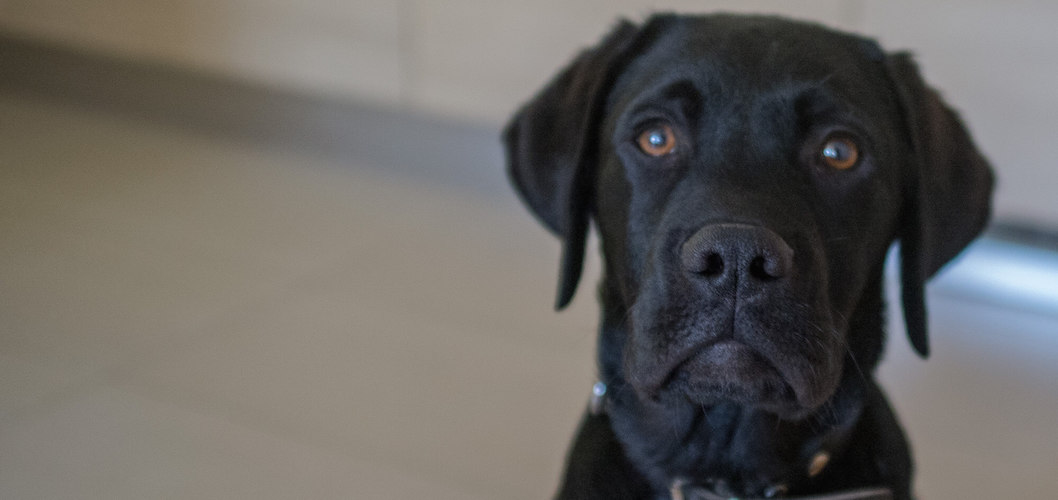If you know me personally we’re probably friends on Facebook, which also probably means you know that I got a puppy a few weeks ago, whom I called ‘Tesla’. Sorry about the deluge of pictures. I’m 30 years old and this is my first dog, so please, bear with me for a while.
You’ll probably also know that I run Systemato, a digital marketing business. I’ve done so since 2013, and since then this little digital agency went from being just me, to myself and a team of 9 regulars, as well as many occasionals, shall we call them.
You may also know that I’m quite analytical, so given that I work from home and therefore have lots of hours with Tesla, my puppy, I noticed a few things. And a few of these things were bugging me, because I could see parallels between my dog’s progress, and my business’. So this is “What My Dog Has Taught Me So Far About Running My Digital Marketing Business.”
1: Access
The dog can’t make a mistake, that is, chew your guitar, if it doesn’t have access to it. Tesla doesn’t. He is either around the house with me, while I’m working, often just chilling or sleeping under my chair, or else in his crate for a couple of hours if I’m not home and there’s no one to watch him.
The same, I find, applies to both employees and customers in or of a digital marketing business.
If you’re concerned about an employee having access to sensitive information, for example, don’t give them access. If they need it for their work, then you have a mental struggle of another kind to overcome, but if they don’t, the solution is simple.
As to your clients, if you are concerned that they might make a well-meaning mistake with their Facebook Ads campaign, or Google Adwords, or anything else, give them read-only access.

No one likes billing a client because said client took down their own website or something like that.
So by all means, give limited access, and explain that it’s for their own safety you recommend you do this. Thankfully, you don’t have to explain to your puppy, although I do anyway, and I’m sure he understands.
2: Repetition
There is NOTHING, nothing on this earth, that can help you teach a puppy quicker than repetition. Sure, if it’s a smart puppy, it will learn ‘sit’ and ‘down’ with a handful of repetitions and daily usage after that, but getting to anything else will need lots and lots of repetition.
The same in a digital marketing business. The more you do something, the better you’ll get. This does not mean being repetitive in your messaging, techniques, and work, or simply sticking with what you know.
What you do know, however, repeat it often, hone it, and get super good and quick with it.
The reason why we can turn in a fairly substantial piece of content, to spec, to deadline, and on budget is because we’ve done hundreds of these jobs, with a team structure in place, with clear deadlines, and people in charge. With each project we got better at asking the right questions to get the info we need, at estimating how long research, writing, and editing will take, at estimating how much time each team member needs for their part of the job, and how not cock up along the way.
And the more of these we do, the better we get.
3: Routine
Routine ties in a little with Repetition, however, there’s a bigger picture thing going on here. Whereas repetition is often for a specific task or trick (if you’re Tesla), routine is more about the shape of the day and how it ought proceed.
For example, Tesla knows that when he starts whining between 0630 and 0700, myself or my girlfriend will get out of bed, walk him outside quickly to do his business, then back upstairs and to the crate it is, until all the humans have woken up and he gets breakfast. Half an hour after that, he is taken out again, but then not until lunch.
What I’m saying is that with a clear pattern, punctuated by certain events at specific points of the day, the puppy can learn what is expected of him and when.
It’s very similar in business. If I meet a potential client and get their project brief, I immediately go to David, who runs the team, so he can estimate when the team can finish by, and assess if we got enough information. There is a set procedure in play, so I know what David expects of me, and me of him and the rest of the team.
Did we learn this right away? Haha, no. It took some missed deadlines, lack of quality, and assorted embarrassments along the way. But we got there, we got used to the routine, or rather, ‘project management flow’ if you will, and now we’re all the better for it.
4: Clarity
Clarity is a hard lesson learnt for me. See, I’m fairly verbose, and for some reason find it cute to talk big to my puppy. Of course, it’s all Greek to him, so I can’t expect him to pick up a cue of ’sit’ from a string of words he doesn’t comprehend.
So, back to monosyllables it was. For two weeks, my vocabulary consisted of ‘no’, ‘yes’, ‘sit’, ‘down’, ‘toilet’, and ‘leave it’. Oh, and ‘good boy’. Lots of ‘good boys’. I still babbled on to my puppy, but not if I was giving instruction, or an order. It got to the point where even conversations with my girlfriend were essentially single word commands, with me going ‘No!’ if she tried to pick something off my plate, without me even realising. Suffice to say that I was in the doghouse that evening.
However, when it came to the puppy, the results were immediate. Tesla now sits on command, with not such a high fail rate even when outside or in unfamiliar circumstances and surrounded by distractions.

Same thing for this digital marketing business; clarity is very important, and hard learnt. With hindsight, I can say that clear communication is the one reason we got so efficient; when we hand a project or task brief over, or when we request one from the client, we know what we need, and the tools required for the job, what their limits are, and ours too.
If there was a single skill I look for in people here at Systemato, clear communication is tops, a) because we need to communicate clearly as a team, and b) some form of communication is 90% of what we do here.
5: Perseverance
Reading the above, you’d think my puppy is an angel descended from heaven. Yes, he is an extremely good puppy, so much is true, but also true is that because I work from home most days, I have hours upon hours where I can watch, teach, and correct him if needs must. And needs must most days, and we have had our fair share of correction, but every day we learn and every day we start anew, with renewed gusto.
This business didn’t become what it did by accident, not completely in any case. Many things that we now take matter of factly and are ingrained into the business, were things that we decided on early, often with no real view of the future, but always with the intention of increasing efficiency, clarity, and quality.
When this business was only David and me some 4 years ago, we could have decided to work using email, and not a project management tool like Asana. But we chose Asana, and were rewarded, partly because the tool itself got oh so much better since then, and partly because we could quickly scale up without sacrificing anything, wasting more time, or creating unnecessary work for ourselves.
6: Hard Lessons
There are a few lessons that are hard to learn, and hard to watch. Tesla is fearless, and entirely unconcerned with the size of the dog opposite him. This is dangerous, because we won’t know all the dogs whose path we will cross, and sometimes, it pays to stand down.
So, the lesson he learnt came by way of Archie, my girlfriend’s family English Pointer, a big, magnificent beast that can vault over Tesla with the utmost of ease. Tesla tested his patience one too many times, and Archie put him down in a big way, making Tesla shake with fear. Lesson learned; play all you like and chase him, but do not test Archie’s patience. With each subsequent encounter, the two get on better and better, and the intimidation tactics become less frequent.

I’ve learnt some hard lessons myself in business. The wrong choice of setup, employees, clients, and wrong choices for myself too. The whole lot. And I’ve also seen clients or employees make mistakes, which I warned them about. A lesson, however, is rarely learned by proxy. All you can do if they persist, is like I did with Tesla; stand there and protect him when the intensity got too much for him.
Since Tesla doesn’t speak English, I could also let him know that he’s a big wuss and should learn to only pick fights he can end. That’s a bonus you don’t get with a client or employee who’s screwed up and knows it, where you can only do the decent thing and see how you can help.
7: Blame
It’s not the puppy’s fault if you let him poo in the house; at his age, he doesn’t know any better, and it’s your responsibility to be aware of when next he’ll need to go. So it’s my fault he did it, because I wasn’t listening, or I wasn’t paying attention, and I let the circumstances stray from the norm without preparing for a mistake.
Same in business. If an employee or a client makes a mistake, I always assume it’s genuine, first off. Second, it’s probably my fault for not having caught it out, because of lack of clarity, because I wasn’t paying attention, or because I assigned the task at hand to the wrong person.
With clear demarcations and responsibilities blame becomes very easy to assign; if a writer missed a deadline, is it my fault for not knowing that they were abroad and couldn’t work, or did they not inform me? And if they didn’t inform me, why did I leave till the eve of the deadline to follow up and check the progress?
I’m not saying that it’s always my fault, or indeed, my colleagues’, but with clarity in communication you’ll often find you won’t have blame to place at all.
8: Experiment
There was a particularly frustrating few days when Tesla simply would not do his business outside. The reason is because for the first few days, I allowed him to do that on the roof. Out on the street though, he wouldn’t which meant a pent up puppy letting loose in the house, and a very frustrated owner.
On one walk, I took a chance and guided the puppy to an area that was paved in a very similar concrete to what I have on the roof. Lo and behold, Tesla did his business. Fantastic, I have something to work with now. Step by step, and Tesla now lets loose almost on command, as soon we’re out of the house.
And in business? Instagram, for example, is something I’m a big fan of, and which I recommend to a number of my clients. I was also absolutely certain I would run a little Instagram experiment if I got a puppy. Sure enough, the day after Tesla was home, I set up an account ‘for him’, parentheses as everyone does with their fingers when I tell them about Tesla’s Instagram account. They’re right of course.
The account is three weeks old and already has over 150 followers, which is not huge by any stretch, but is completely organic. More importantly for me, I now know which kind of images work to get over 50 likes on a post, and which don’t. Same for hashtags, and I also have an all new feed of cute dogs from all around the planet. Lessons all round!
So yeah, sure, we aren’t as big as @dogsofmalta yet, or in Tesla’s case, as big as some of the dogs featured there, but we’re growing, slowly but surely, and it’s fun and learning along the way. And speaking of which, @dogsofmalta how about a feature?
9: Rewards
Today I stopped to talk to a neighbour and he was absolutely astounded when I told a four month old puppy to sit and Tesla did so, on command, even though the neighbour’s 4 colourful birds chirping in their cages was all Tesla could think of. “How did you teach him that?”, he asked.
“Repetition and rewards”, I said.
Yes, ‘good boy’ works with a dog, but he expects that as a matter of course. What is needed is a strong currency, and what does a dog like? Food, particularly the good kind. So if I give my dog a tiny piece of ham or a treat for every good ‘sit’ for two weeks, by the end he’ll associate obeying the order with the reward and we’re home free. That’s the theory anyway. It works, most of the time.
People look like their dogs, they say, and I can tell you they also think like them in some ways. Rewards are super important to people. I don’t just mean financial rewards; though they are important, they’re not everything.
How about praise, for example? Acknowledge when a job was well done, and more so when a teammate exceeded your expectations. Or freedom? We work remotely here at Systemato, and I know for a fact that my colleagues appreciate that, as it affords them certain freedoms others don’t have, and it makes our coworking sessions all the more fun and productive. Or how about saying thank you, and letting them know you appreciate their efforts. Buy them dinner sometimes, go for a beer and foot the bill yourself.
Like in business life, any success I’ve had so far with Tesla is not only my own. My girlfriend Chiara is a wizard with dogs and pretty convincing to me, so when she corrects my approach, I listen. My siblings visit often, understand the rules, and don’t undermine me. And my colleagues too, they work from here very often, and understand if I’m a little distracted 5 times an hour, and love Tesla as if he were their own.
As I do with my business, I read, and I learn. Where I read Sujan Patel, Neil Patel, the Hotjar blog, the Sumo articles, and so many more to further my knowledge and deepen my understanding of the digital marketing business I run and the industry I operate in, I read, voraciously, Zak George’s Dog Training Revolution in particular, as well as many dozens of his YouTube videos. I felt completely ridiculous sometimes, watching a quick YouTube video to brush up before going outside with Tesla, but dammit, it works.
If you liked the article, or at least the photos of Tesla, give him a follow on Instagram. I promise to give him a belly rub for each new follower, and a treat for every ten.


Mark, even by your high standard that was an excellent piece of writing. Maybe Tesla has found away to pay his way !!
Thank you Graham, I’m glad you liked what Tesla helped me cobble together. 🙂